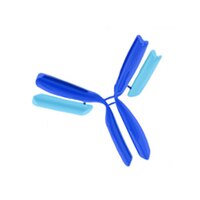GR37 Sigma-AldrichAnti-Vitamin D Receptor (Ab-1) Rat mAb (9A7γE10.4)
This Anti-Vitamin D Receptor (Ab-1) Rat mAb (9A7γE10.4) is validated for use in Frozen Sections, Gel Shift, WB, IP, Paraffin Sections for the detection of Vitamin D Receptor (Ab-1).
More>> This Anti-Vitamin D Receptor (Ab-1) Rat mAb (9A7γE10.4) is validated for use in Frozen Sections, Gel Shift, WB, IP, Paraffin Sections for the detection of Vitamin D Receptor (Ab-1). Less<<Recommended Products
概述
| Replacement Information |
|---|
重要规格表
| Species Reactivity | Host | Antibody Type |
|---|---|---|
| Am, Ch, Ht, H, M, Porcine, R | R | Monoclonal Antibody |
价格及供货情况
| 产品目录编号 | 库存情况 | 包装 | 数量 / 包装 | 价格 | 数量 | |
|---|---|---|---|---|---|---|
| GR37-100UGCN |
|
塑胶安瓿;塑胶针药瓶 | 100 μg |
|
— |
| Description | |
|---|---|
| Overview | Recognizes both occupied and unoccupied vitamin D receptor in breast carcinomas expressing the vitamin D receptor protein. |
| Catalogue Number | GR37 |
| Brand Family | Calbiochem® |
| Product Information | |
|---|---|
| Form | Liquid |
| Formulation | In 10 mM PBS, 0.2% BSA, pH 7.4. |
| Positive control | Breast carcinoma tissue (see comments) |
| Preservative | ≤0.1% sodium azide |
| Quality Level | MQ100 |
| Physicochemical Information |
|---|
| Dimensions |
|---|
| Materials Information |
|---|
| Toxicological Information |
|---|
| Safety Information according to GHS |
|---|
| Safety Information |
|---|
| Product Usage Statements |
|---|
| Packaging Information |
|---|
| Transport Information |
|---|
| Supplemental Information |
|---|
| Specifications |
|---|
| Global Trade Item Number | |
|---|---|
| 产品目录编号 | GTIN |
| GR37-100UGCN | 04055977228311 |
Documentation
Anti-Vitamin D Receptor (Ab-1) Rat mAb (9A7γE10.4) MSDS
| 职位 |
|---|
Anti-Vitamin D Receptor (Ab-1) Rat mAb (9A7γE10.4) 分析证书
| 标题 | 批号 |
|---|---|
| GR37 |
参考
| 参考信息概述 |
|---|
| Brown, A.J. 1999. Nephrol. Dial. Transplant. 14, 11. Fleet, J.C. 1999. Nutr. Rev. 57 60. Evans, S.R., et al. 1998. Clin. Cancer Res. 4, 1591. Friedrich, M., et al. 1998. J. Histochem. Cytochem. 46, 1335. Issa, L.L., et al. 1998. Inflamm. Res. 47, 451. Kivineva, M., et al. 1998. J. Steroid Biochem. Mol. Biol. 66, 121. Nangia, A.K., et al. 1998. J. Steroid Biochem. Mol. Biol. 66, 241. |
引用
| 标题 | |
|---|---|
|
|
| 数据表 | ||||||||||||||||||||||||||||||||||||||||||||
|---|---|---|---|---|---|---|---|---|---|---|---|---|---|---|---|---|---|---|---|---|---|---|---|---|---|---|---|---|---|---|---|---|---|---|---|---|---|---|---|---|---|---|---|---|
|
Note that this data sheet is not lot-specific and is representative of the current specifications for this product. Please consult the vial label and the certificate of analysis for information on specific lots. Also note that shipping conditions may differ from storage conditions.
|












